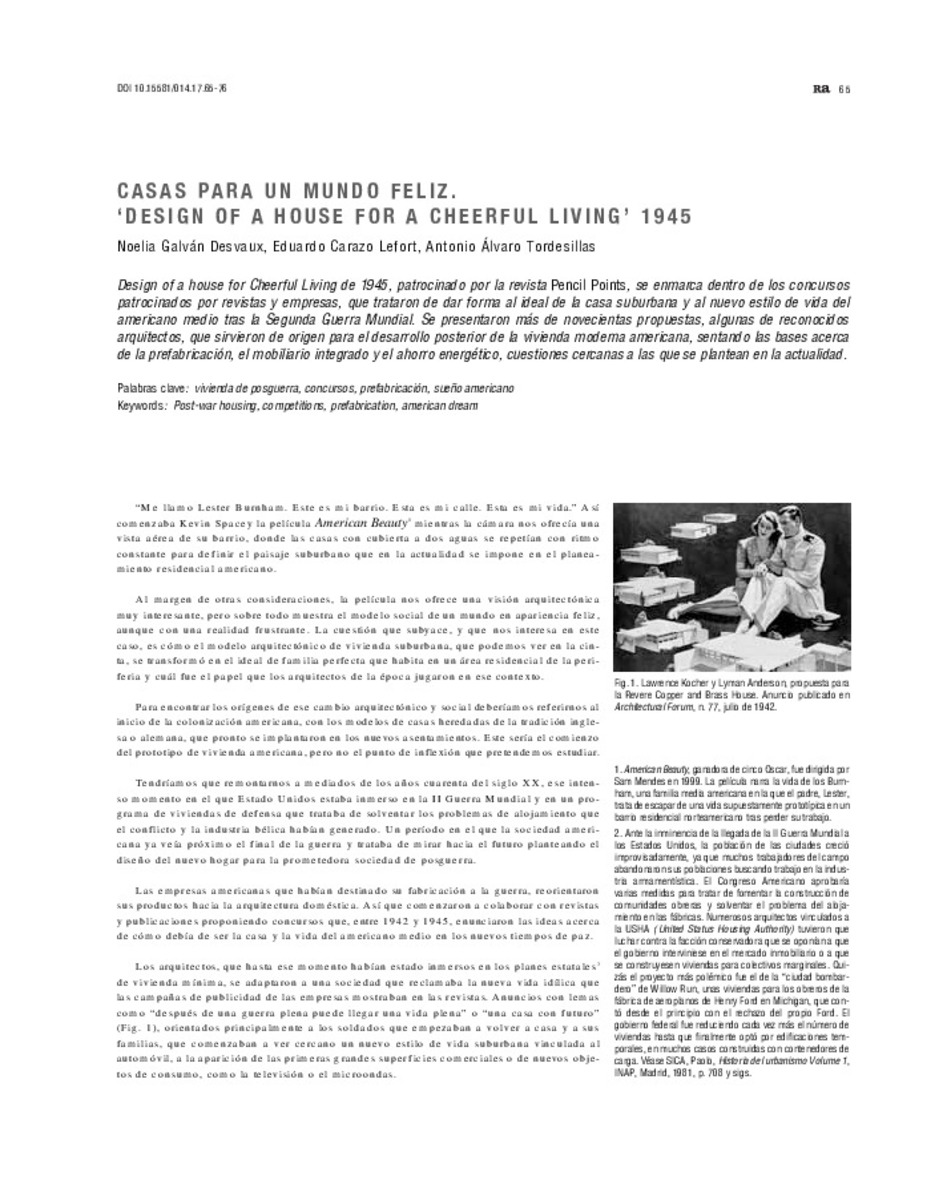Casas para un mundo feliz. 'Design of a house for a cheerful living' 1945
Otros títulos :
'Design of a House for a Cheerful Living' 1945
Palabras clave :
Sueño Americano
concursos
Vivienda de posguerra
Prefabricación
Fecha de publicación :
2015
Editorial :
Servicio de Publicaciones de la Universidad de Navarra
Cita:
Tordesillas, A. (2015). Casas para un mundo feliz. 'Design of a house for a cheerful living' 1945. Revista de Arquitectura, 17, pp. 65-76
Aparece en las colecciones:
Estadísticas e impacto
0 citas en

0 citas en

Los ítems de Dadun están protegidos por copyright, con todos los derechos reservados, a menos que se indique lo contrario.







